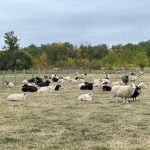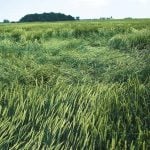
Practical Tips

Why not a Prairie sheep sector?
Practical Research: We have demand here for lamb but the supply, for now, is mainly elsewhere

Rodent showdown: how one squirrel evicted the mice from my henhouse
Practical Research: Next time you see a squirrel running around your chicken flock, barn, house or garage, consider your course of action carefully

Common mistakes and misinformation
Practical Research: A compendium of miscellaneous misconceptions now floating around farm country

‘Sustainable’ versus ‘regenerative’ agriculture
Practical Research: Defining these terms in a farming context can be confusing to each and all of us

Why crops lodge: a crop-by-crop discussion
Practical Research: Stormy summer weather is one thing, but lodging in a moist, calm growing season is something else

For wheat, aster yellows can be a disaster
Practical Research: This destructive disease isn’t just a canola thing

Corn’s amazing nature
Practical Research: The fusarium we see in small cereal grains is the anamorph of the pink mould seen in corn

Potatoes Prairie-wide
Practical Research: How Prairie researchers uncovered a serious potato disease’s hiding place

A compendium on molybdenum
Practical Research: Let’s look at a key micronutrient we may all be taking for granted

Adding wood ash to soil both practical and cost-effective
Practical Research: Too often headed for the landfill, ash can reduce soils’ acidity and enhance cropland fertility


